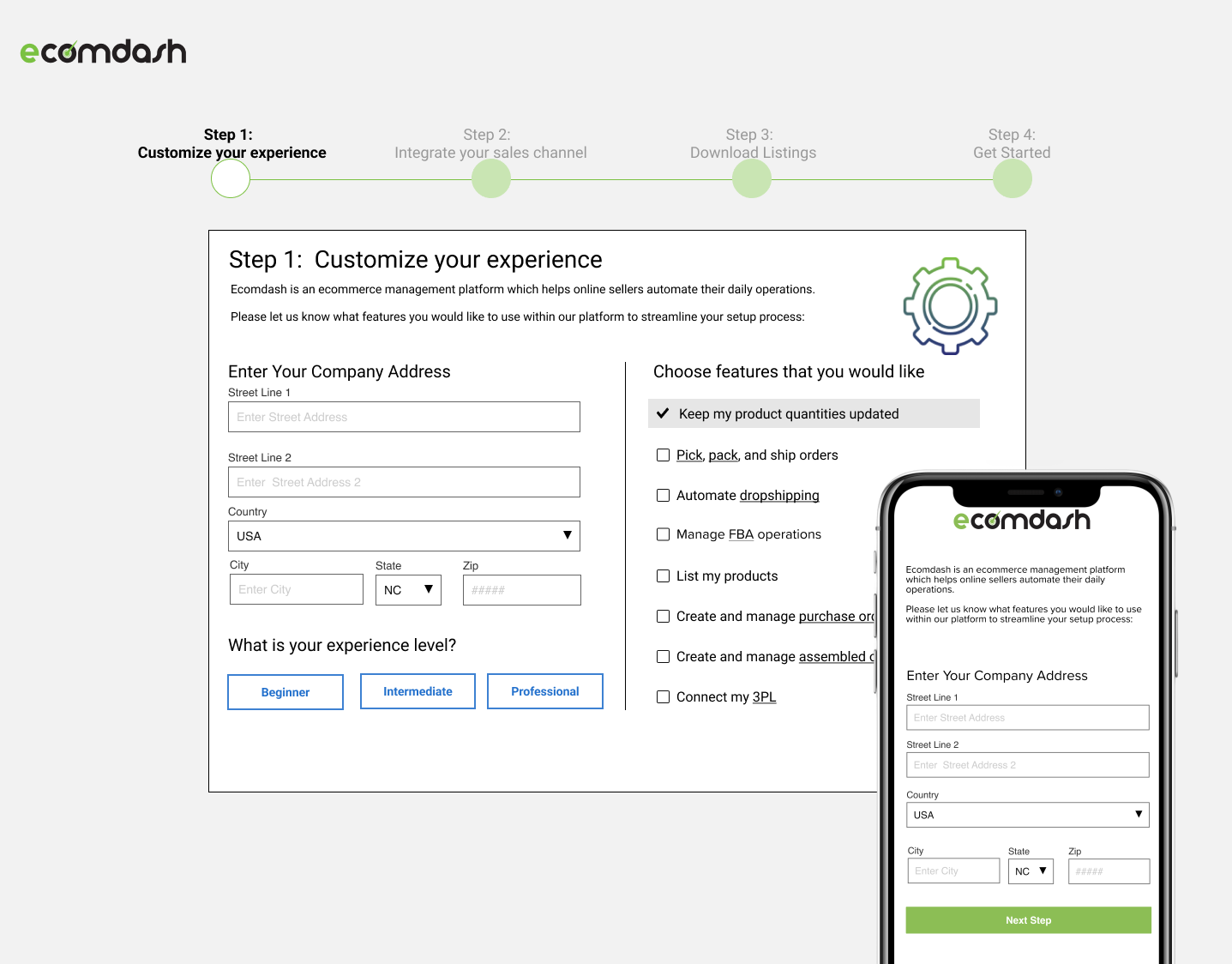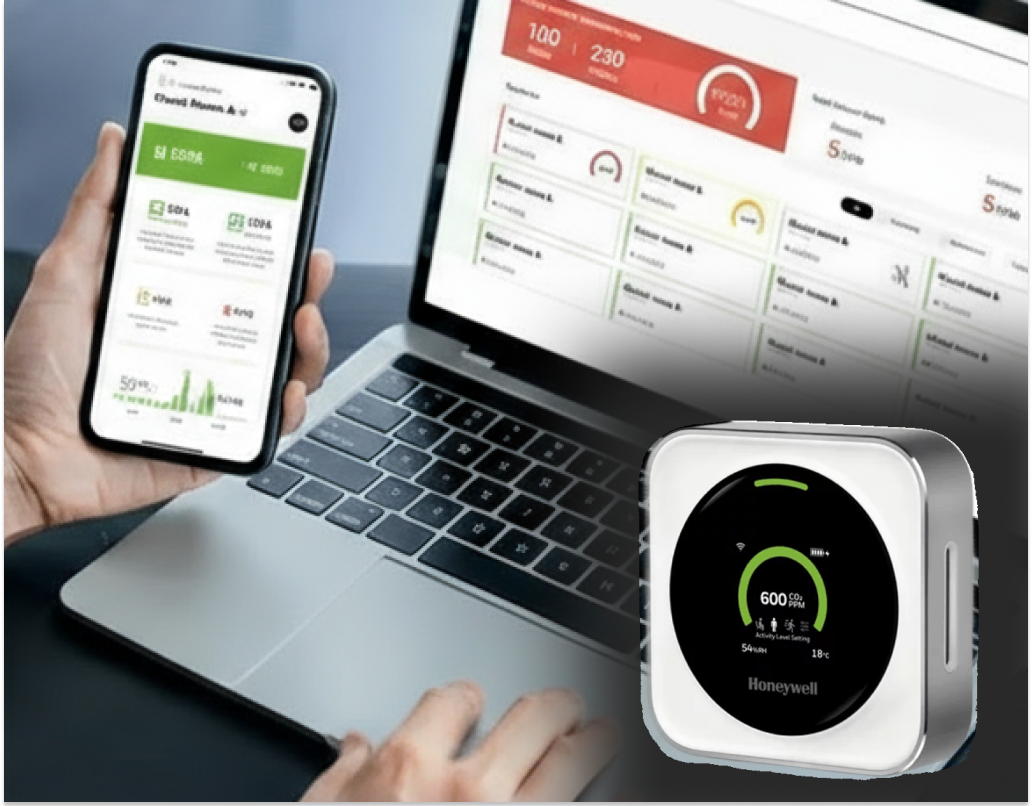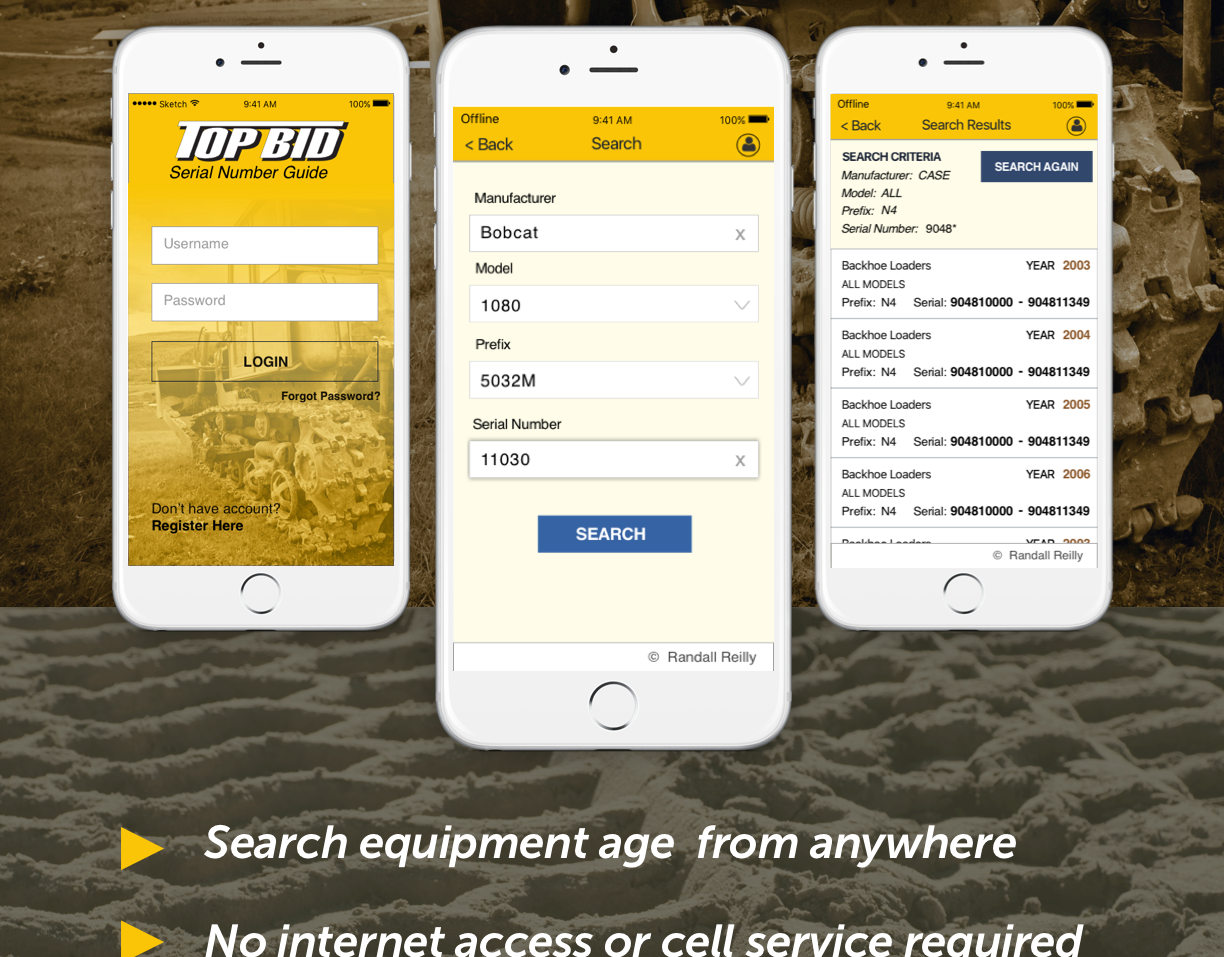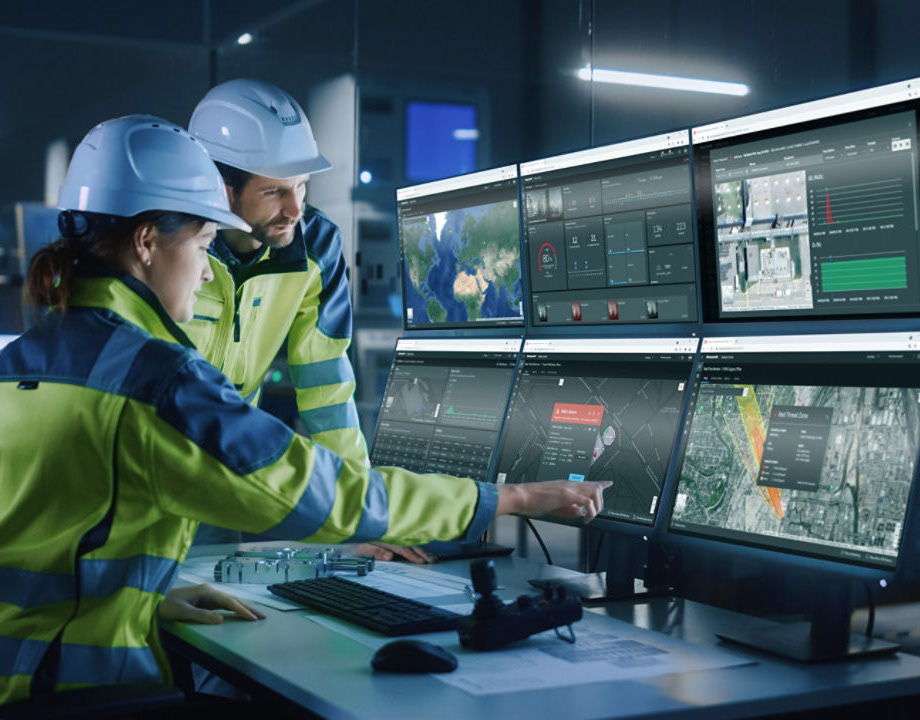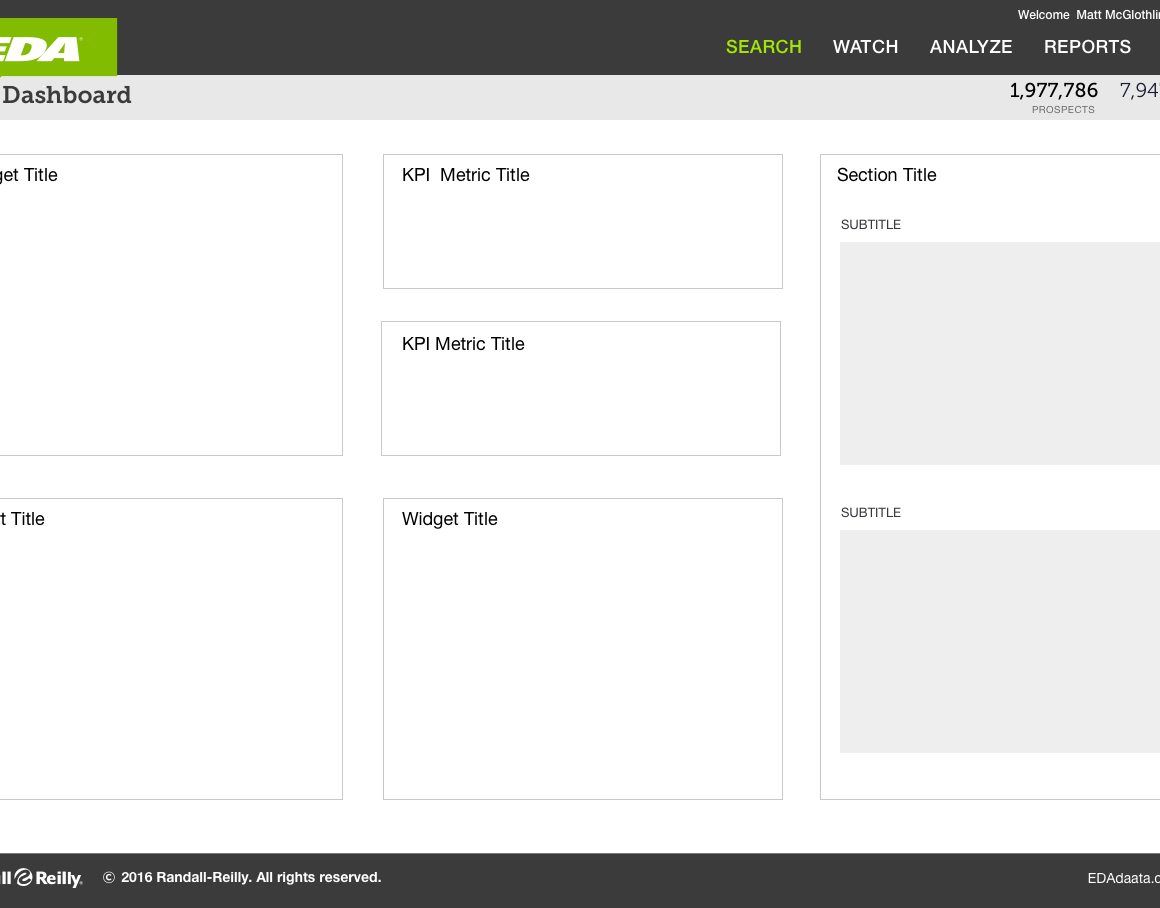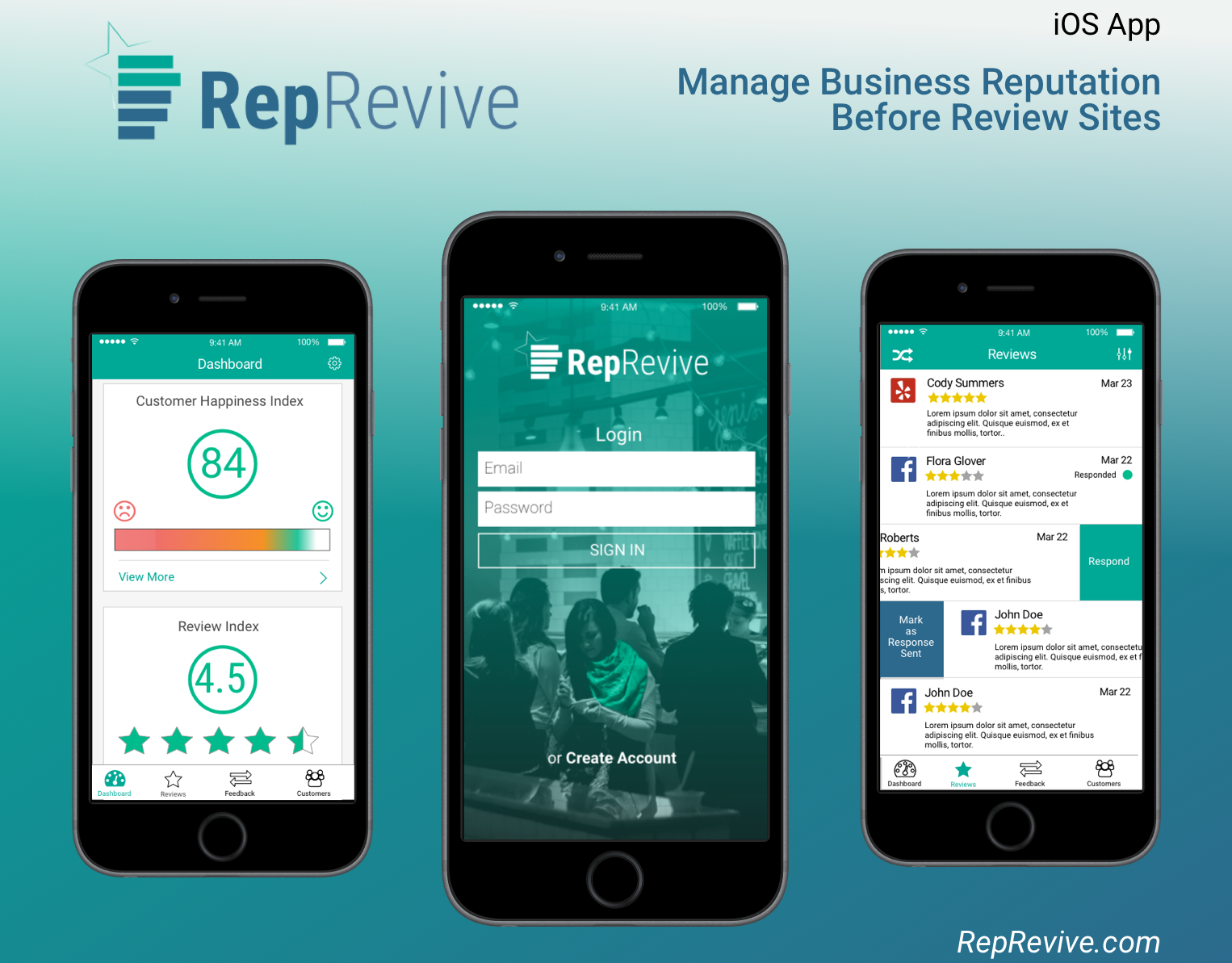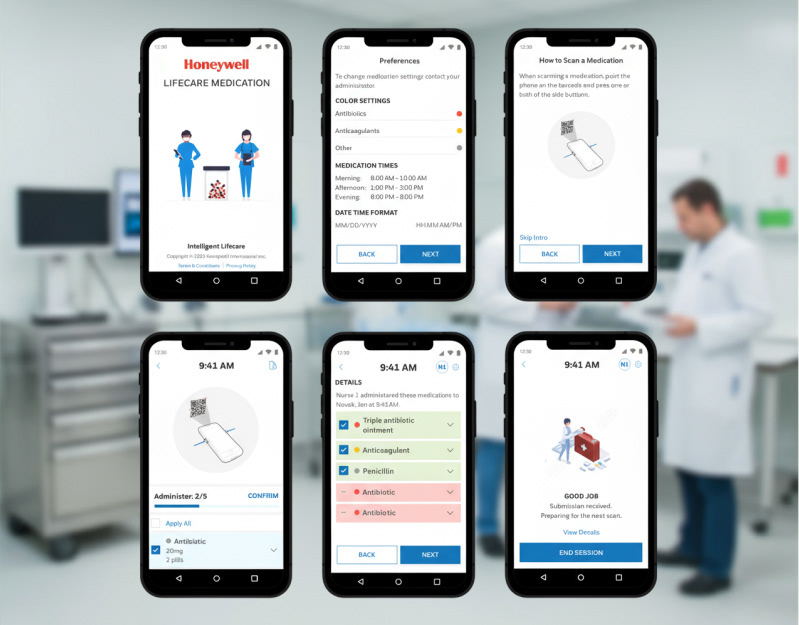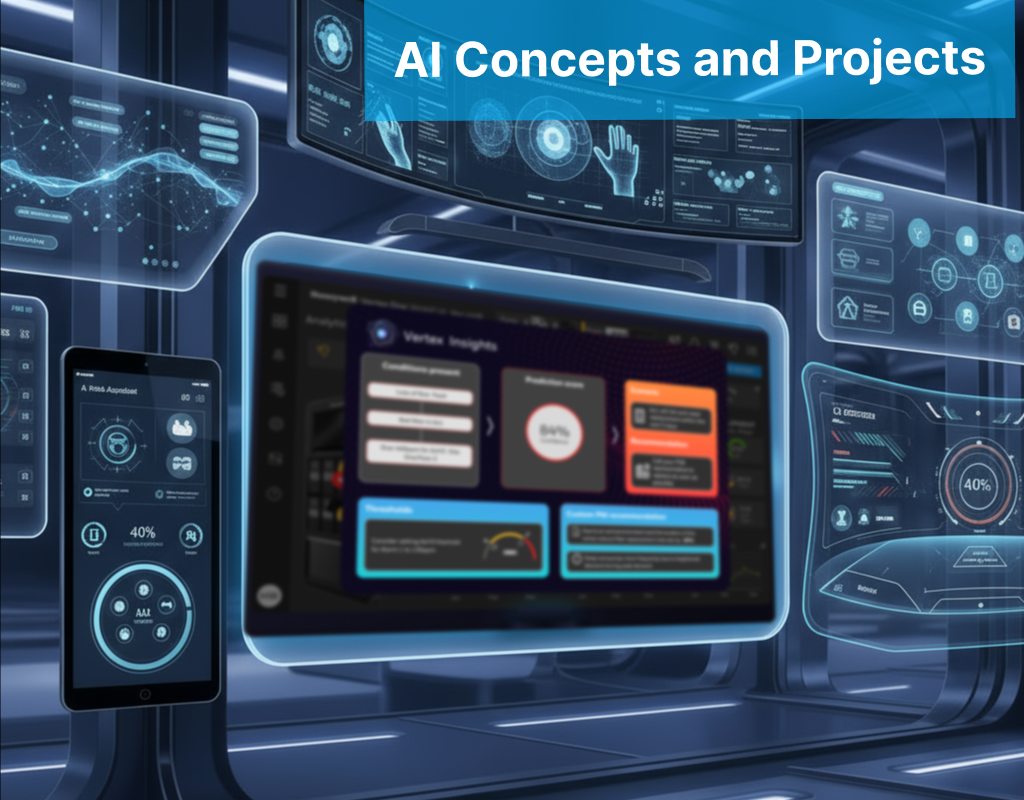Honeywell UX Leader
• Led global team of designers in China, India, Mexico and the United States
• Led RAIL meetings conducted with team in Miro
• Developed a digital management operating system for documentation and project setup
• Transitioned team from Sketch/Invision workflow to Figma/Miro workflow
•. Implemented versioning system for branching/merging designs so devs could see differences
• Designed Figma templates for project cover images, slide decks, and design reviews
•. Conducted quality review meetings for global team members
• Conducted monthly design trend meetings sharing best practices, AI releases and latest tooling updates
NOTE: Some images are blurred to protect the intellectual property.
Interviews
I conduct structured yet conversational interviews with subject-matter experts, end users, and customers to understand their workflows, challenges, and goals. Each session is guided by a discussion plan but allows flexibility to probe deeper into emerging themes.
During each interview I take rapid notes with Miro sticky notes and any screens shared with permission., I
I distill key observations, pain points, and quotes into color-coded sticky notes in Miro sometimes using the AI tool to get started.
I cluster related notes through affinity mapping, which helps surface recurring patterns, unmet needs, and opportunity areas.
This visual synthesis allows cross-functional teams to quickly see common pain points, prioritize design opportunities, and align around validated user insights that inform journey maps, personas, and product strategy.
Common themes that start and I can begin to develop a strategy for the project based on themes and pain points.
Workshops
The next step is conducting a workshop (in person if possible) and from this we can start to validate themes and see new emerging issues.
Creating a journey map during the workshop is often a great tool for identifying additional pain points
New themes start to emerge from the journey map and discussions.
With the help of AI and synthesizing tools I'm able to identify the Top 5 themes that emerged from the workshop and interviews.
From there it is a matter of prioritizing features with stakeholders and identifying what to work and a strategy for the project. This identifies the features that we can control or can't control as well as which are the most impactful
And the which solutions/feature are high effort, high impact or low effort, high impact or low effort, low impact or high impact high effort.
Then it's identifying how to identify and mitigate expected risks for our top features.
Here is a look at some deliverables from the final presentation to stakeholders, CTO and leadership
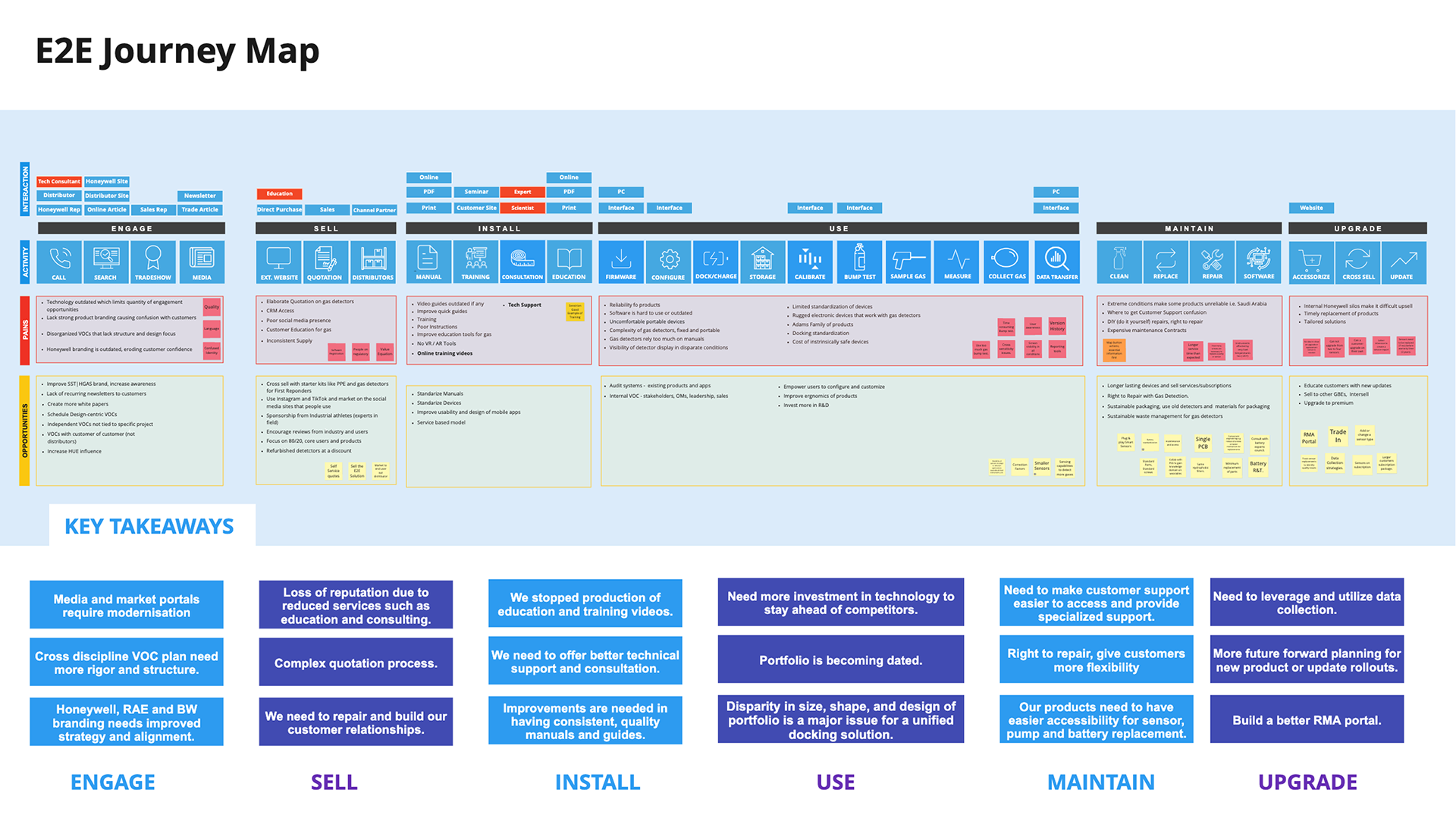
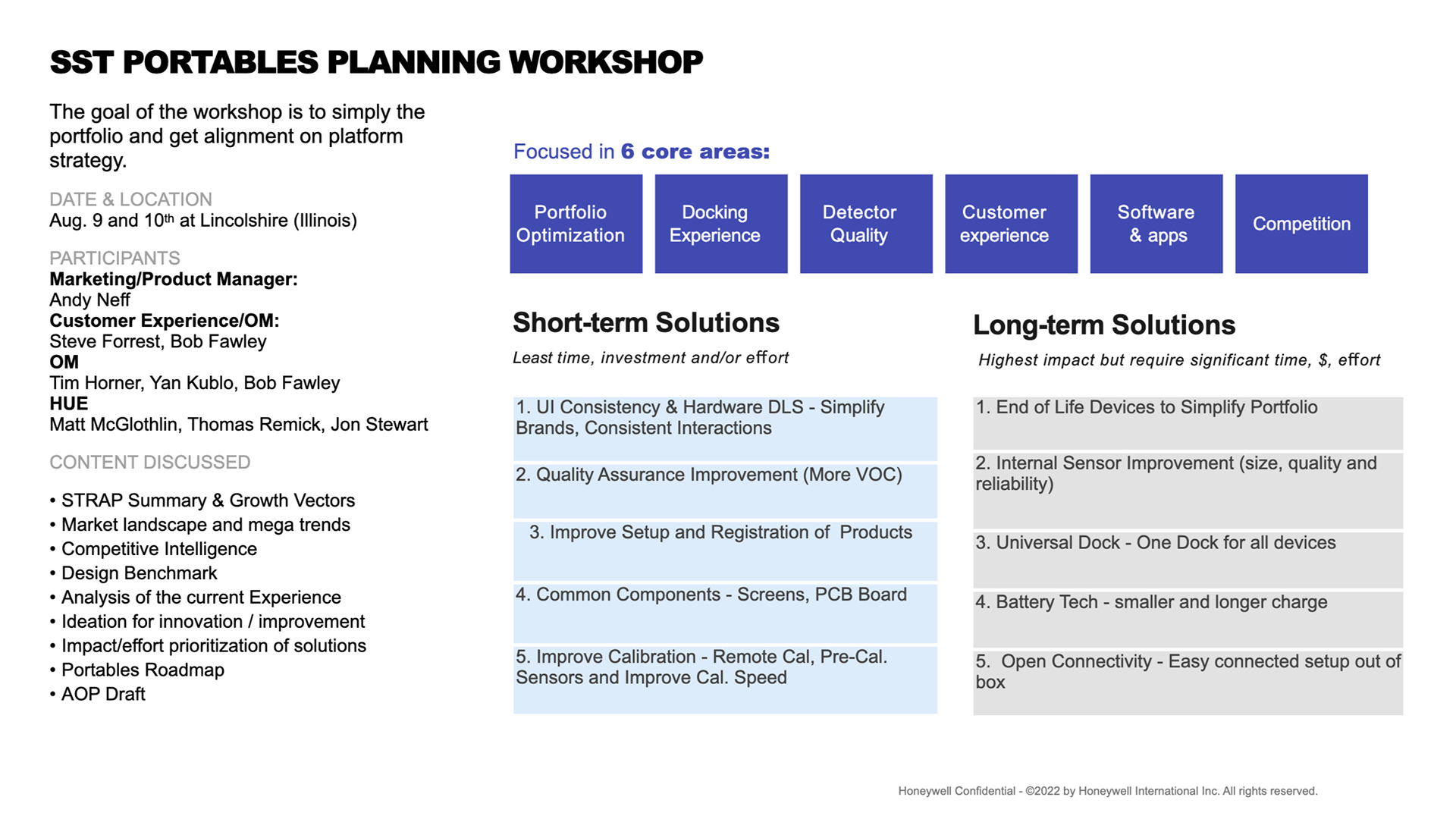
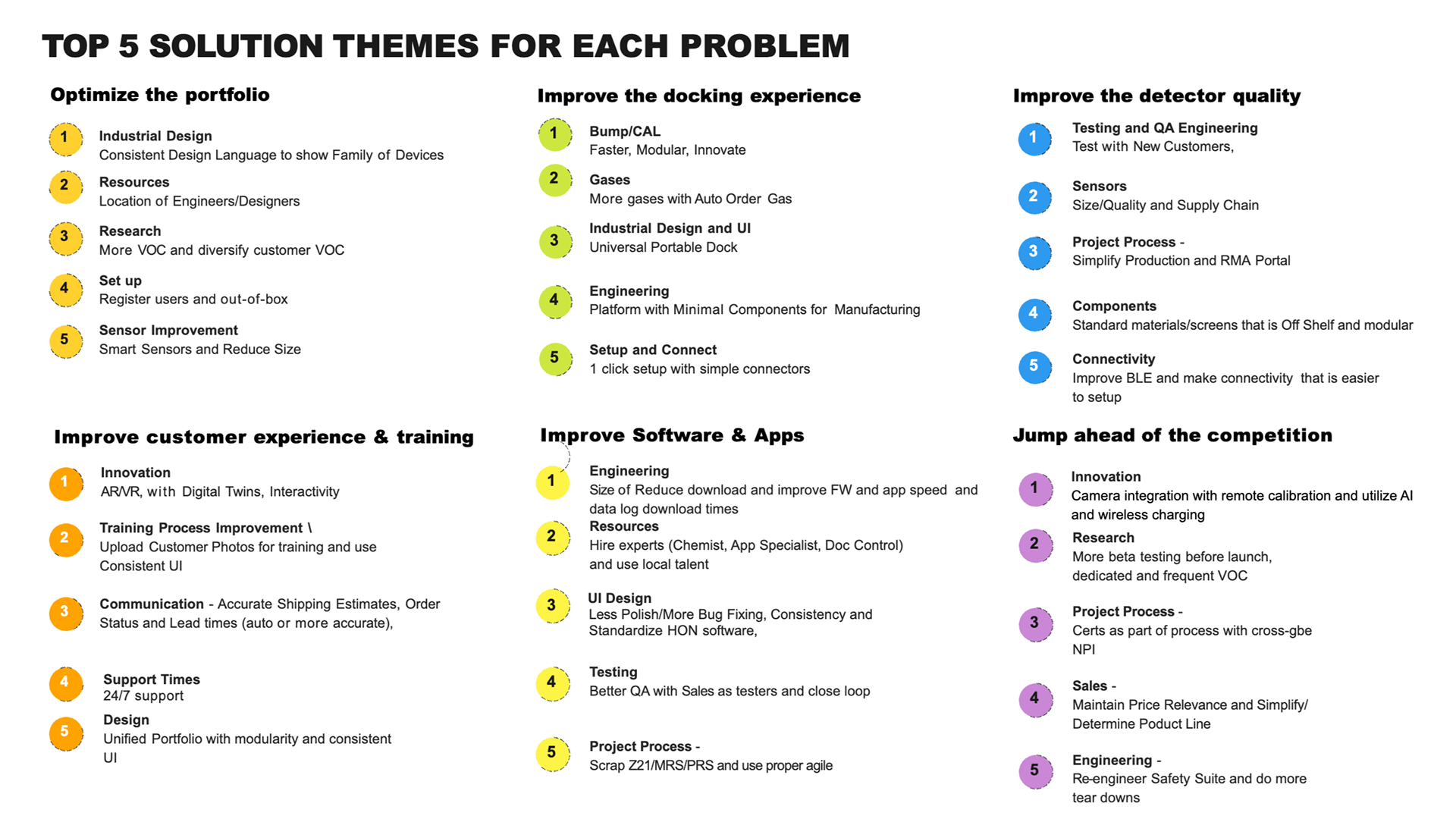
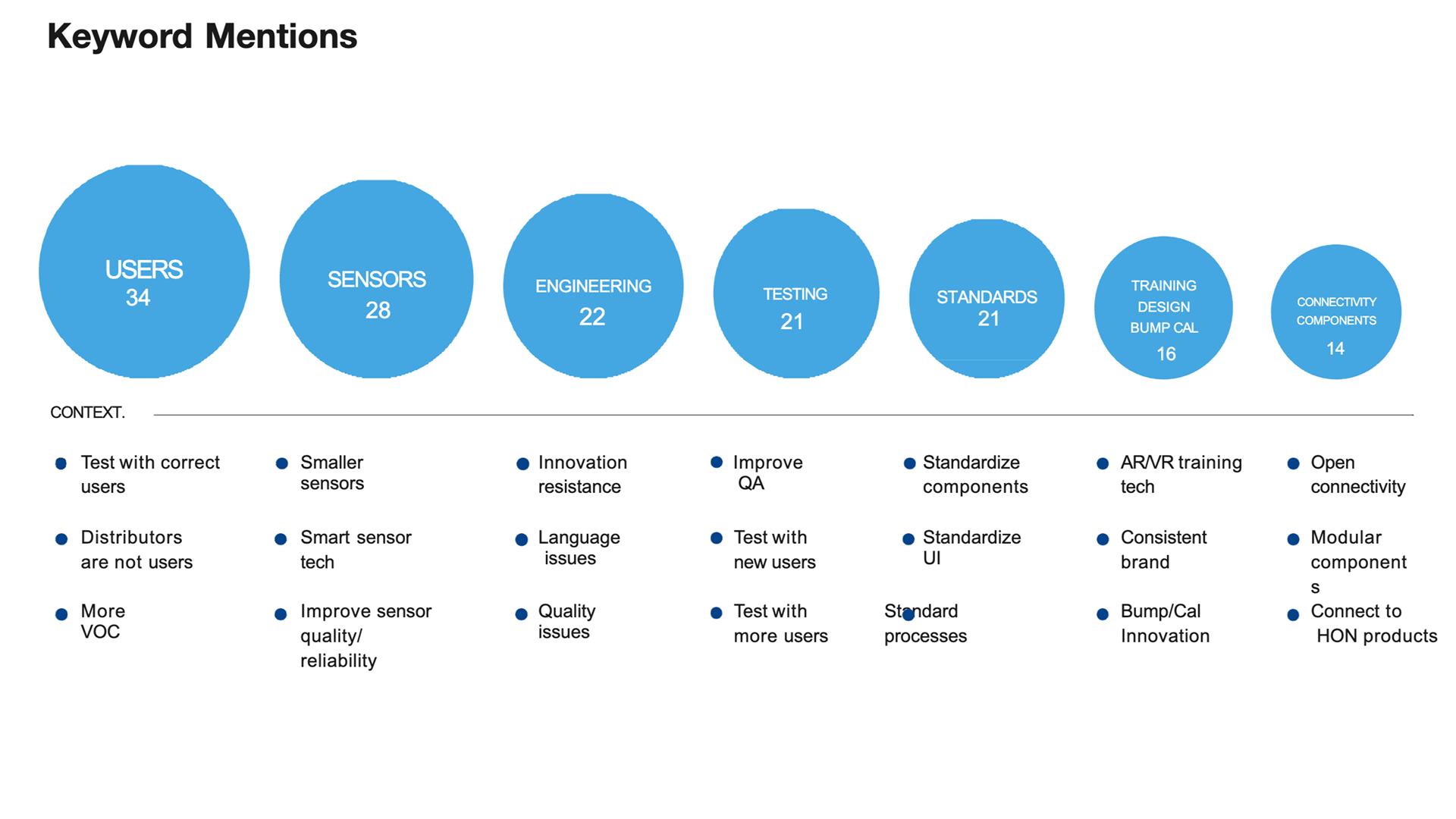
Competitive Analysis
I perform competitive analysis to benchmark Honeywell’s user experience against industry leaders and emerging players. This includes reviewing software workflows, interface patterns, and value propositions from competitors such as Blackline, Dräger, MSA, and Industrial Scientific.
I document and visualize these findings in Miro, mapping each product’s key capabilities across categories like Device Setup & Configuration, Fleet Management, Real-Time Monitoring, and Safety Outcomes. By analyzing feature coverage, interaction models, and accessibility gaps, I identify opportunities for differentiation and innovation.
This method helps define “table stakes” vs. “advantage” features, informing product roadmaps, prioritization, and design direction. It also ensures alignment with user expectations while guiding where to invest in next-generation capabilities such as AI assistants, predictive analytics, and mobile-first workflows.
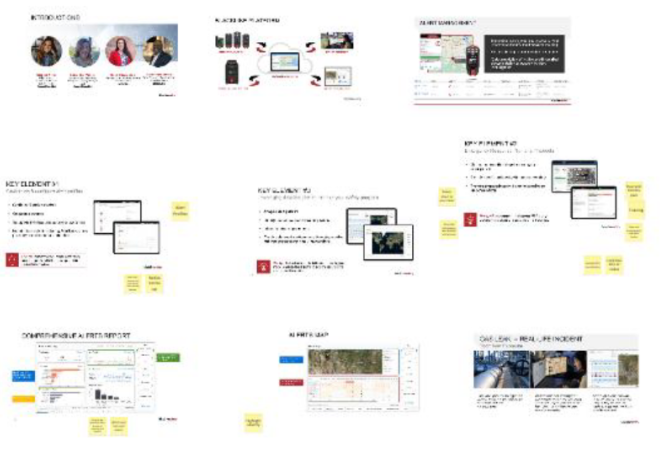
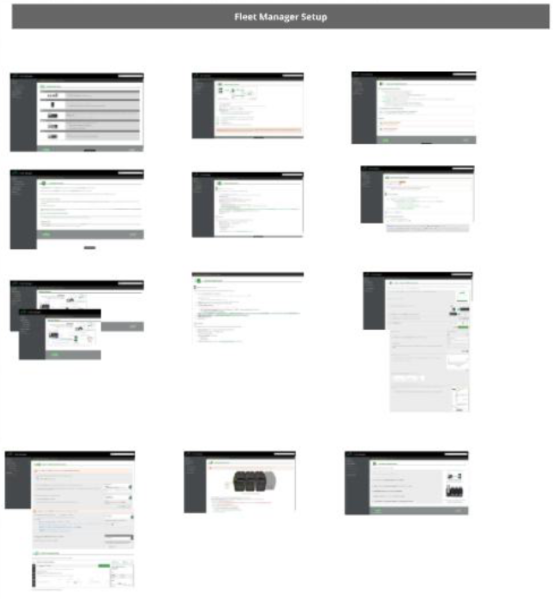
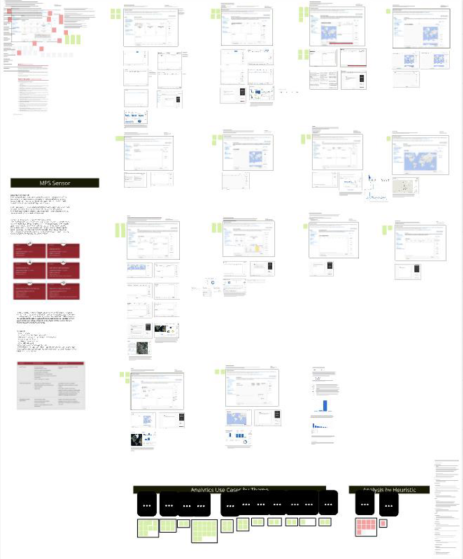
Versioning system in Figma helps to keep developers track. We used branching and merging for multiple designers working on the project.
Documenting design files with annotations and comments from dev.
The digital operating system for the team included templates for project cover images, a UX capabilities deck to share with stakeholders, a document outlining the design process and metrics and guidelines for measuring project quality. I also created a best practice document for documentation.
The team would create stories in Jira and also utilize Confluence for updating projects.
